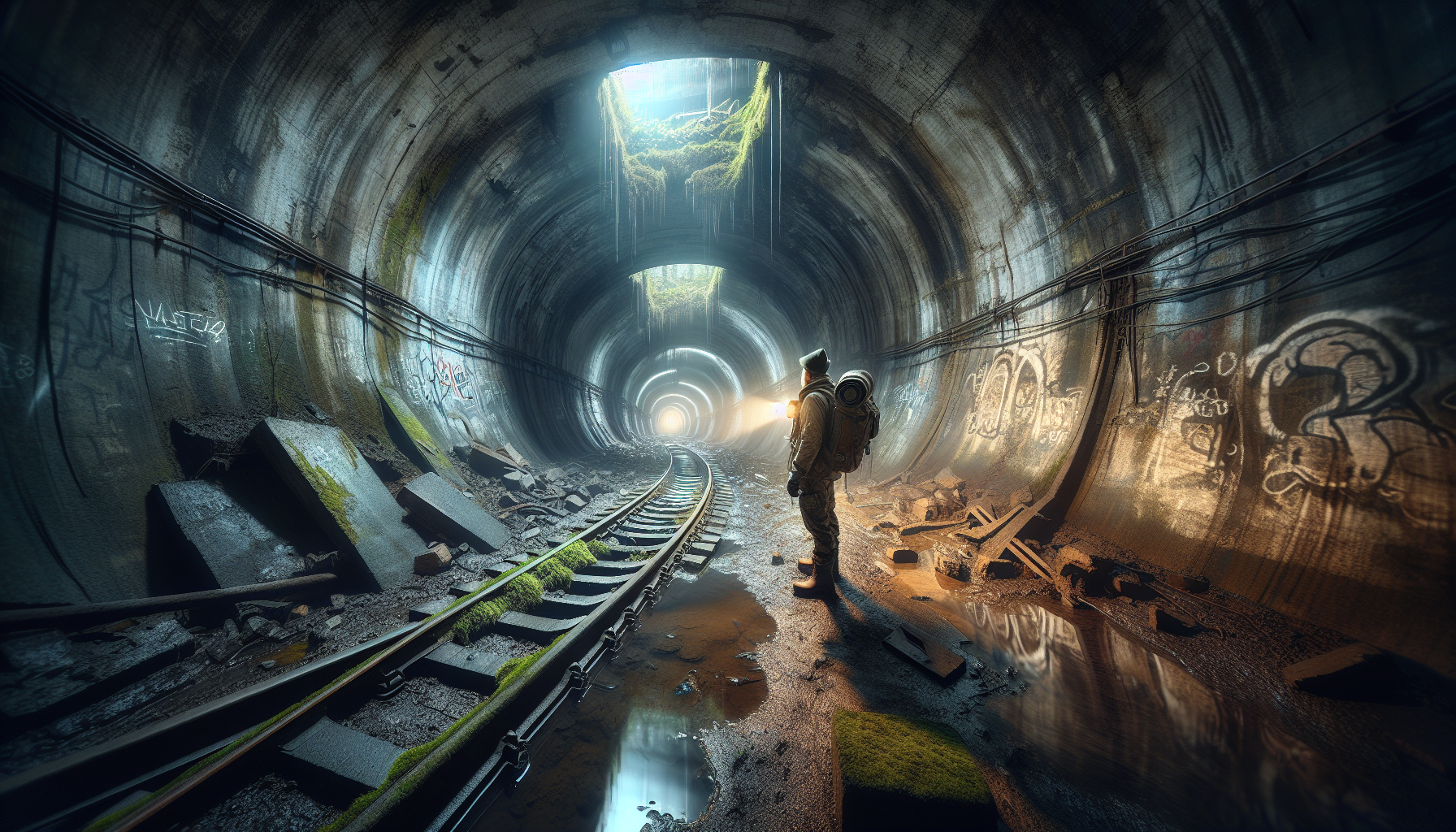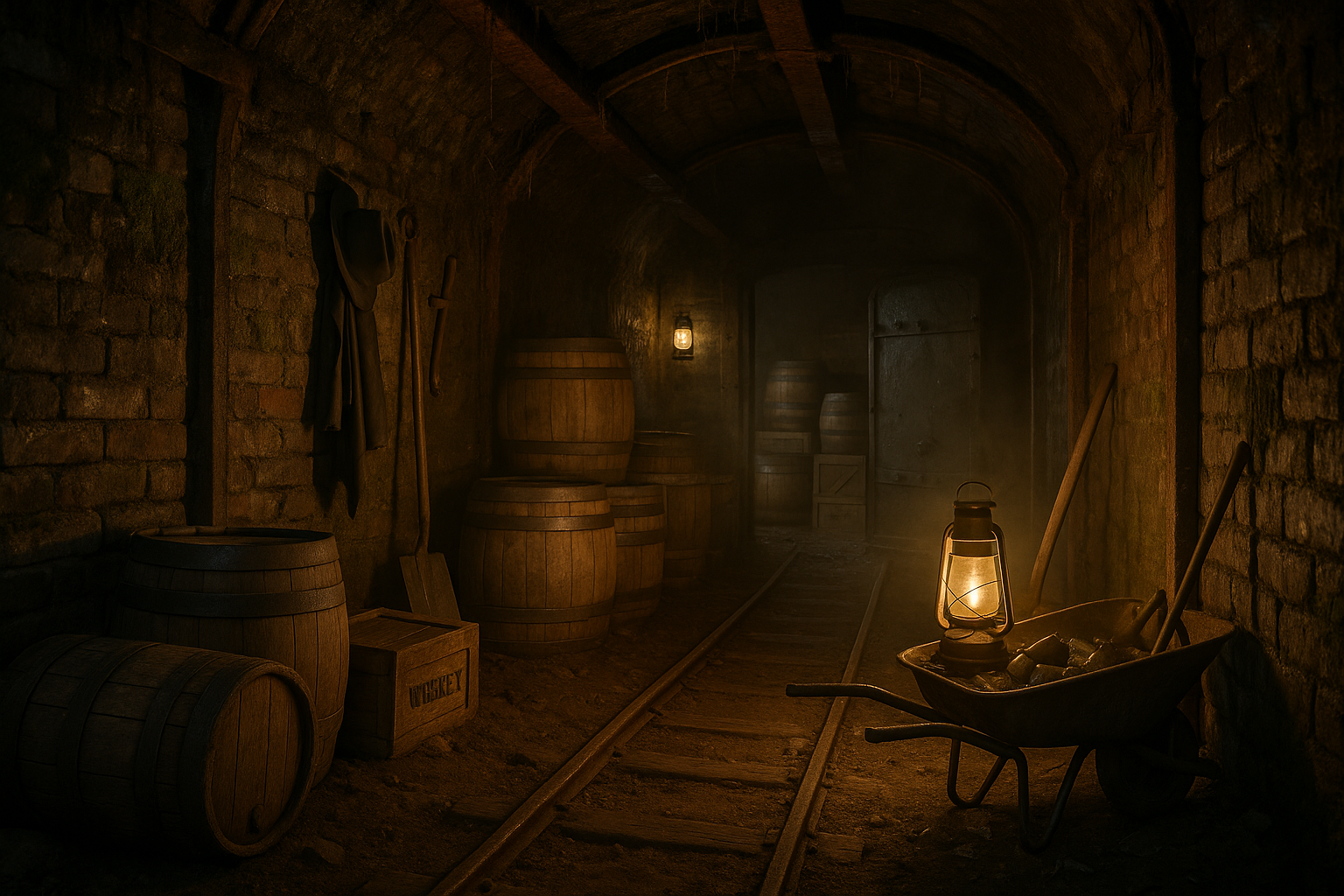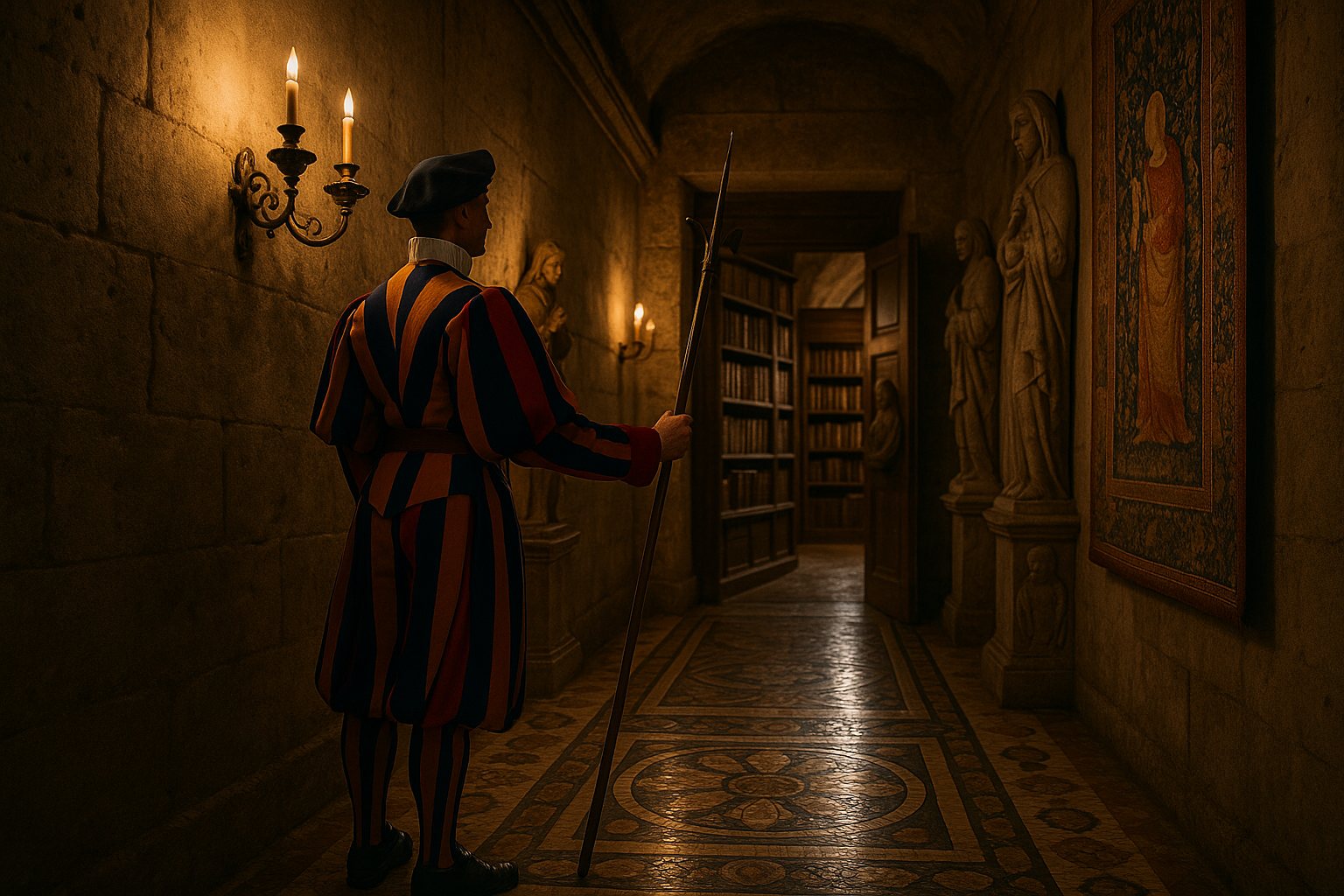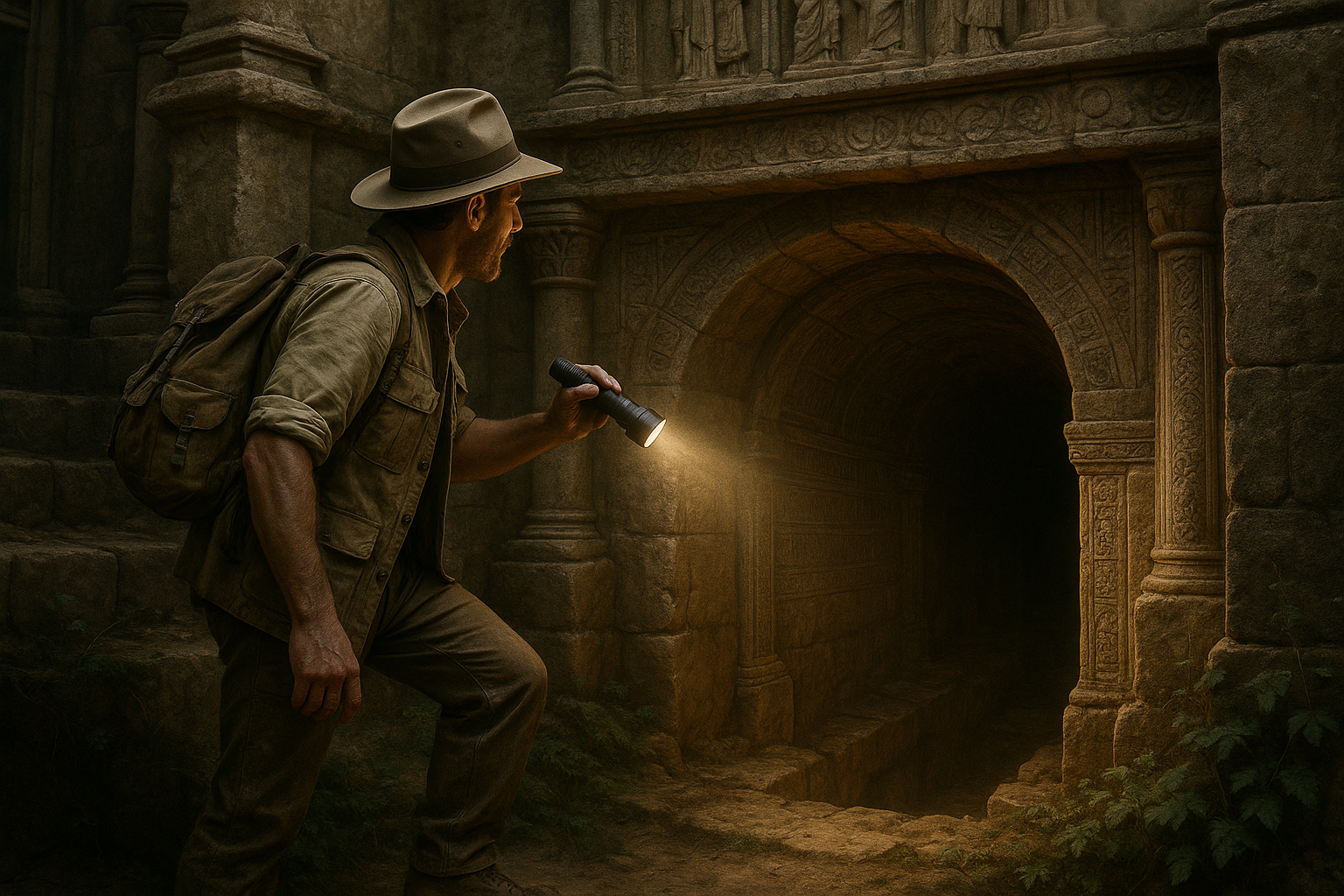Beneath the bustling streets of modern cities lies a hidden world that few dare to explore—a realm shrouded in mystery, history, and the echo of forgotten stories. Welcome to the intriguing domain of urban exploration, where adventurers seek out the abandoned tunnels that weave their way beneath our feet, telling silent tales of the past. These subterranean passages, often left to decay, offer a unique lens through which we can view the evolution of urban landscapes, the rise and fall of industries, and the ever-persistent march of time. In this article, we will journey into the depths of these tunnels, uncovering not only their physical presence but the stories they hold within their shadowy corridors.
Urban exploration, or urbex as it is commonly known, has gained popularity over recent years, attracting those with a curiosity for the unseen and a thirst for adventure. The allure of exploring these abandoned tunnels is multifaceted. For some, it’s the thrill of venturing into the unknown, navigating spaces that have remained untouched for decades. For others, it’s an opportunity to connect with history in a visceral way, to walk the same paths that countless others did before cities transformed and evolved. These tunnels, whether remnants of old transport systems, forgotten sewer networks, or unused military bunkers, offer a tangible connection to the past, reminding us of the ever-changing nature of urban environments.
In our exploration of abandoned tunnels, we’ll delve into several captivating topics. First, we’ll examine the historical significance of these tunnels, tracing their origins and understanding their initial purposes. Were they built for transportation, to carry the lifeblood of a growing city, or were they constructed for more covert operations during times of conflict? Next, we’ll consider the cultural impact of these spaces, looking at how they have inspired art, literature, and even subcultures within modern society. We’ll also discuss the legal and ethical considerations of urban exploration, understanding the fine line between exploration and trespass, and the responsibilities that come with venturing into these neglected areas.
As we traverse these dimly lit passages, we’ll also uncover the risks and rewards that come with urban exploration. Safety is paramount, and we’ll provide insights into how explorers prepare for their journeys, ensuring that their adventures are both thrilling and secure. Moreover, we’ll highlight some remarkable discoveries that have been made within these tunnels—forgotten artifacts, stunning graffiti art, and the remnants of bygone eras waiting to be rediscovered. Whether you’re an experienced urban explorer or someone new to the concept, this exploration promises to offer a fresh perspective on the hidden world beneath our cities. 🌆🔦 Join us as we unearth the secrets of these abandoned tunnels, and perhaps you’ll find yourself inspired to embark on your own adventure into the unknown.
The Allure of Urban Exploration
Urban exploration, often referred to as “urbex,” is an adventure sport that combines the thrill of exploration with the mystery of the abandoned. Abandoned tunnels, in particular, captivate the imagination of explorers worldwide, offering a glimpse into forgotten histories and untold stories. The practice of urban exploration has grown in popularity over the years, thanks in part to the rise of social media platforms where adventurers share their discoveries and document their experiences. This unique form of exploration not only satisfies a thirst for adventure but also educates individuals on the forgotten infrastructures that lie beneath our cities.
The allure of these abandoned tunnels is multifaceted. For some, it is the historical significance of these subterranean spaces, which were once bustling with activity and have since fallen into disrepair. For others, it is the architectural marvels that these tunnels represent, showcasing engineering feats that were considered cutting-edge at their time of construction. Furthermore, urban explorers are often driven by the sheer thrill of venturing into the unknown, navigating dark and often dangerous passageways that have been untouched for decades.
However, urban exploration is not without its risks. Abandoned tunnels can be hazardous, with unstable structures, flooded sections, and the potential presence of harmful substances. It is crucial for explorers to prioritize safety, arming themselves with the necessary equipment and knowledge before embarking on their journeys. Many urban explorers form communities, sharing tips and information about locations, safety measures, and the legal implications of their activities. This collaborative spirit is one of the many aspects that make urban exploration a unique and fulfilling pursuit.
Safety Measures and Legal Considerations
One of the primary concerns for urban explorers is safety. The abandoned nature of these tunnels often means they are not maintained, resulting in potential hazards. Explorers must be prepared to encounter unstable structures, sudden drops, and other physical dangers. Safety gear, such as helmets, sturdy boots, and flashlights, are essential for any exploration mission. Additionally, some explorers choose to carry rope or other climbing equipment to navigate particularly challenging sections of tunnels.
Legal considerations are also a significant aspect of urban exploration. Many abandoned tunnels are on private property or are otherwise off-limits to the public. Trespassing is a common concern, and explorers must weigh the risks of legal consequences against their desire to explore. In some areas, local laws may allow for limited exploration under certain conditions, and it is crucial for explorers to research the legal status of the locations they wish to visit. In some cases, obtaining permission from property owners or relevant authorities can mitigate potential legal issues.
Despite the risks, urban exploration offers unparalleled rewards. The sense of discovery and accomplishment that comes from uncovering a hidden part of the world is difficult to replicate. For those interested in urban exploration, it is essential to approach the activity with respect for the locations, ensuring that any visits do not cause damage or disturbance. Ethical exploration practices help preserve these sites for future adventurers, allowing them to experience the same thrill of discovery.
Historical and Architectural Significance of Abandoned Tunnels
Abandoned tunnels are often rich in history, providing a window into the past and offering insights into the development of urban environments. Many of these tunnels were originally constructed for transportation, utility services, or military purposes. Over time, as cities evolved and technology advanced, these tunnels were rendered obsolete and fell into disuse. Exploring these spaces allows individuals to connect with the history of their cities in a tangible way, seeing firsthand the remnants of past eras.
The architectural significance of these tunnels is also noteworthy. Many abandoned tunnels feature impressive engineering and design elements that reflect the technological advancements of their time. From intricate brickwork to expansive vaulted ceilings, these tunnels are a testament to the ingenuity and skill of the architects and builders who constructed them. For those with an interest in architecture and engineering, urban exploration offers a unique opportunity to study these historical structures up close.
A notable example of the historical and architectural significance of abandoned tunnels can be found in the old subway systems of major cities. These tunnels, once part of the lifeblood of urban transportation, now lie dormant, waiting to be rediscovered. Exploring these tunnels reveals the changing nature of transportation infrastructure and highlights the challenges and triumphs faced by urban planners throughout history. For history enthusiasts and architects alike, these tunnels provide a fascinating glimpse into the past.
Famous Abandoned Tunnels Around the World
Around the globe, there are numerous famous abandoned tunnels that have become popular destinations for urban explorers. Each tunnel has its own unique history and characteristics, drawing adventurers from far and wide to uncover its secrets.
- The Paris Catacombs, France: An extensive network of underground tunnels and quarries that hold the remains of over six million people, the Paris Catacombs are both eerie and captivating. Originally limestone quarries, the tunnels were repurposed as ossuaries in the late 18th century.
- The Cincinnati Subway, USA: An unfinished and abandoned subway system beneath Cincinnati, Ohio, this tunnel network was constructed in the early 20th century but was never completed due to financial constraints. Today, it stands as a testament to the ambitious infrastructure projects of the past.
- The Shanghai Tunnels, USA: Located beneath Portland, Oregon, the Shanghai Tunnels were once used to transport goods from the waterfront to various parts of the city. Rumored to have been used for human trafficking, these tunnels are steeped in mystery and intrigue.
Exploring these famous tunnels requires careful planning and preparation. While some are accessible through official tours, others require more clandestine efforts to access. Regardless of the approach, each tunnel offers a unique experience that is sure to captivate the imagination.
The Community and Culture of Urban Exploration
Urban exploration has fostered a vibrant community of enthusiasts who share a passion for discovering the hidden and forgotten aspects of our urban landscapes. This community is characterized by a strong sense of camaraderie and a shared desire to uncover the unknown. Online forums, social media groups, and dedicated websites serve as platforms for explorers to share their experiences, tips, and photographs, creating a rich tapestry of stories and images from around the world.
The culture of urban exploration is also marked by a set of unwritten rules and ethical guidelines. Respect for the locations and a commitment to leaving no trace are fundamental principles upheld by most explorers. This ethos ensures that the sites remain preserved for future exploration and minimizes the impact on the environment and local communities. Additionally, the culture emphasizes safety and preparedness, with experienced explorers often mentoring newcomers to ensure they are equipped to handle the challenges of urban exploration.
Resources for Aspiring Urban Explorers
For those interested in embarking on their own urban exploration adventures, a wealth of resources is available to help get started. Online communities such as Reddit’s r/UrbanExploration offer valuable insights and advice from experienced explorers. Books and documentaries on the subject provide further inspiration and knowledge, detailing the history and techniques of urban exploration.
The video below, titled “Exploring Abandoned Tunnels: Tips and Tricks” by The Urbex Channel, offers practical advice for aspiring explorers. It covers essential safety tips, gear recommendations, and strategies for navigating the complexities of urban exploration.
In addition to online resources, local urban exploration groups often organize meetups and group explorations, providing opportunities for networking and learning from seasoned explorers. These gatherings are invaluable for building connections within the community and gaining firsthand experience in the field.
Conclusion
Uncovering the hidden world of urban exploration, particularly focusing on abandoned tunnels, has taken us on an incredible journey through history, adventure, and discovery. This exploration not only opens a window into the past but also provides us with a unique perspective on the cities we inhabit today. Throughout this article, we delved into various aspects of urban exploration, uncovering the intriguing allure of abandoned tunnels and the stories they have to tell. As we conclude this captivating topic, let’s revisit some of the essential points and reflect on the broader implications of our findings.
Firstly, the historical context of these tunnels is fascinating. Many of them were built for purposes such as transportation, utilities, or even wartime protection. Over time, as cities evolved and technology advanced, these subterranean pathways were left behind, forgotten by the mainstream. Yet, their very existence is a testament to human ingenuity and the relentless pursuit of progress. By exploring these tunnels, we gain insights into the architectural and engineering marvels of past eras, reminding us of the advancements we often take for granted today.
Moreover, urban exploration serves as a bridge between the past and present, allowing us to connect with history in a tangible way. Walking through these abandoned tunnels, one can almost hear the echoes of those who once traversed them, whether they were commuters, workers, or soldiers. This connection fosters a deeper appreciation for the layers of history that underpin our modern urban landscapes.
The article also highlighted the adventurous spirit inherent in urban exploration. The thrill of discovering a hidden entrance, the anticipation of what lies around the next corner, and the satisfaction of uncovering a forgotten piece of history are all part of what makes urban exploration so captivating. This sense of adventure is not just about adrenaline; it’s about curiosity, learning, and expanding our horizons beyond the confines of everyday life.
Safety, of course, is a paramount concern in urban exploration. We discussed the importance of being prepared, understanding the risks, and respecting the spaces we explore. This includes not only physical safety but also ethical considerations, such as preserving the integrity of the sites and respecting any legal restrictions. Responsible exploration ensures that these hidden worlds can be appreciated by future generations of explorers.
In addition, we explored the community aspect of urban exploration. With the rise of social media and online forums, explorers from around the world can share their discoveries, tips, and experiences, creating a global network of enthusiasts. This sense of community enriches the exploration experience, offering support, camaraderie, and shared learning opportunities. It also underscores the universal human desire to explore and understand the unknown.
Reflecting on the significance of urban exploration, particularly of abandoned tunnels, we must consider its broader impact on our perception of urban environments. These explorations challenge us to look beyond the surface, to question what lies beneath our cities, and to appreciate the complexity and depth of urban spaces. They remind us that cities are not just about what is visible, but also about the hidden layers that contribute to their unique character.
As we wrap up our exploration of this topic, it’s important to reinforce the value of curiosity and discovery. Urban exploration, at its core, is about venturing into the unknown, seeking knowledge, and finding beauty in unexpected places. It encourages us to be more mindful and observant, to appreciate the history that surrounds us, and to approach our urban environments with a sense of wonder.
We invite you, our readers, to engage with this topic further. Whether you are a seasoned urban explorer or someone who is newly intrigued by the idea, there are countless opportunities to learn more and get involved. Consider joining online communities or local groups dedicated to urban exploration. Share your thoughts, experiences, or questions in the comments section below, and connect with others who share your interest.
Moreover, if you feel inspired by what you’ve learned, why not plan your own urban exploration adventure? Remember to prioritize safety and respect for the sites you visit, and take the time to document your discoveries. Sharing your experiences not only enriches your understanding but also contributes to the collective knowledge of the urban exploration community.
Finally, we encourage you to share this article with others who might find it intriguing. By spreading awareness of urban exploration, we can inspire more people to look beyond the ordinary and discover the hidden treasures that lie beneath our cities. 🌍✨
For those interested in learning more, here are a few resources to get you started:
1. Urban Exploration Resource – A comprehensive online community for urban explorers.
2. Atlas Obscura – A guide to the world’s hidden wonders, including many urban exploration sites.
3. Subterranea Britannica – A UK-based society dedicated to the study and investigation of man-made and man-used underground places.
We hope this article has ignited your curiosity and encouraged you to delve deeper into the hidden world of urban exploration. May your future explorations be safe, enlightening, and filled with discovery! 🏞️🔍

Toni Santos is a visual storyteller and artisan whose work explores the quiet power of what lies beneath. With a deep fascination for subterranean and hidden architecture, Toni uncovers the layers, voids, and forgotten spaces that shape our built environment from the shadows.
His art is a journey through the unseen — from ancient underground chambers to sealed passageways, service tunnels, and foundations buried in time. Each creation tells a story of silence, secrecy, and structure — revealing how absence and concealment can be just as meaningful as what’s visible above ground.
Whether working through visual compositions, architectural studies, or symbolic handcrafted pieces, Toni captures the soul of hidden spaces. His work bridges art and archaeology, blending design with discovery. Trained in visual design and traditional techniques, Toni creates with intention. His pieces don’t just depict — they interpret, inviting viewers to rethink what space, memory, and architecture mean when they’re hidden from view.
As the creative force behind Vizevex, Toni shares this perspective through curated visual narratives, symbolic collections, and interpretive essays that give voice to the quiet geometries beneath our feet.
His work is a tribute to:
The mystery of spaces built to be forgotten
The symbolism embedded in foundations, voids, and passageways
The timeless connection between human intention and hidden structure
Whether you’re an artist, an urban explorer, or someone fascinated by the unseen frameworks that support our world, Toni invites you into a realm where architecture becomes myth — one corridor, one layer, one buried story at a time.





